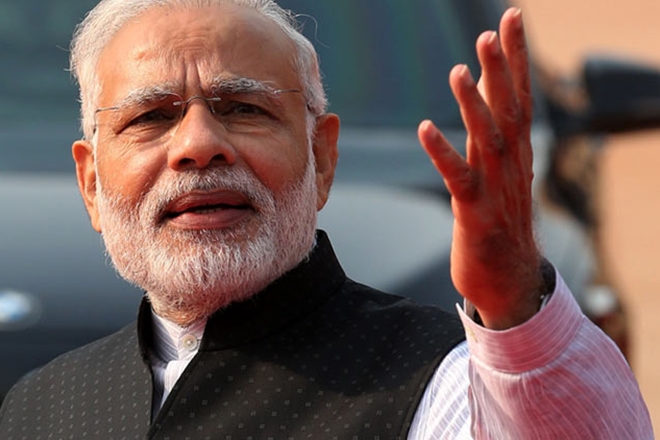Demonetisation was the first step and a big one at that. Demonetisation was one of those rare policies where there was a mixed opinion about the failure or success of the policy and the participants on both sides were astoundingly high. From Gargantuan failure to magnificent achievement, demonetisation received a whole array of brickbats and adulations. But All we need to understand, at least for now is that Demonetisation was the first of many steps to come.
The Real Estate, as a matter of fact is the single largest benefactor of Black-money followed by Gold! Modi Government selectively targeted cash hoarders with the Demonetisation drive, but, what about the people who have already converted them into assets like land and gold?
Unfortunately, in India, most of the gold purchases are cash based. To have at least some control on it, Modi Government made it mandatory for customers to furnish PAN details for purchases above ₹50,000. Now here is the catch, even if the Modi Government can exert some control on the first purchase that is from the shops, Modi Government can have no control whatsoever on the subsequent sale of Gold. I can sell my gold to whomsoever I wish without being under Modi Government’s radar. And, that’s a very tough problem to deal with. On the other hand, transfer of properties (real estate) are relatively much easier to track and to exert control.
And That is exactly where our government is heading now with the amendment to Benami property act, 2016.Aadhaar is being made for registration. There have been no big bang announcements this time, Modi Government has adopted a rather different strategy by making the moves quietly and wisely. But, again coming to the veracity of the amendment – how is this going to control the flow of black money? Let us see.
Benami Transactions (Prohibition) Act, 1988, defines ‘ Benami transaction’ as any transaction in which property is transferred to one person for a consideration paid by another person.
That means, if I pay for a property that is going to be on someone else’s name, the transaction would be a Benami transaction. So, how exactly is that a problem?
The problem is that most of the time the person who is being ‘used’ as the purchaser has no idea about the same. So technically Person A owns a property, money for which is paid by B, A has no idea about it and B continues enjoying the property or even reselling it on A’s behalf. Even if A gets to know about it he may not be able to assert any control over B. The benefits to B are too many. Since it is a shadow purchase, he doesn’t need to include the property in the list of his legally owned assets. Which means he can avoid property taxes. Which also means that he won’t be heckled by taxman for investing more than what he could afford on his declared income. Since it is all fair and legitimate (at least on the surface of it), there is no black money.
Though the Benami Transactions (Prohibition) Act was introduced in 1988, it has remained a toothless tiger with no real powers whatsoever to control Benami transactions. Modi Government planted fresh dentures in the mouth of the tiger in 2016 by a way of amendment, but it is still far from perfect to control the Benami transactions. Hence comes the inclusion of Aadhaar for registration.
Modi Government is planning to make Aadhaar card mandatory for registering any new properties.
Few states like Andhra Pradesh are already doing it, but they haven’t forced it with biometric verification. The advantage of including Biometric Verification is that once the registration process includes the biometric verification of all parties, previous transactions will cease to exist and a fresh history will be initiated. As you are already aware, Aadhar is linked to PAN card and of course PAN Cards are the foundation of IT Returns. Once the property is registered by biometric Verification in Aadhaar, authorities can easily check the income levels in relation with the asset that has been purchased and it will be very easy to find out anomalies.
With the introduction of Aadhaar for registration of new properties, the cycle will be completed. Anybody who has taken money out of the system, they will need to bring it back into the system in order to be able to use it. If one can’t use money, there is no point in holding thousands of crores on his name or a Benami name. It is an established fact that a portion of money is slipping out of the system, every single day. If we can’t control the ways in which money slips out of the system, we can at least control the ways to bring it back into the system. That is precisely what government is trying to perfect. The biggest hurdle of implementing Aadhaar verification is, digitisation of land, property and mutation records. Fortunately, few states like Andhra Pradesh, Telangana, Karnataka have already digitised the records and it will be easy for them to implement it. As for the other states, they have a lot to catch up and it would take a lot of time and sincere efforts.
Now when is it going to be unleashed. Demonetisation 2.0 or crackdown on Benami Properties is still being tested in Government Laboratories. And there have been few indications of it PM Modi’s speeches. If introduced and implemented correctly, it will have a lot more impact than Demonetisation or GST or both combined. While GST is trying to restrict the fresh illegal outflow of money from the system, Aadhaar linked registration will control the inflow of illegal money into the system which had already slipped out. If perfected, GST and Aadhaar linked registration will be the perfect killer combo for that final knockout punch to Black-money.
